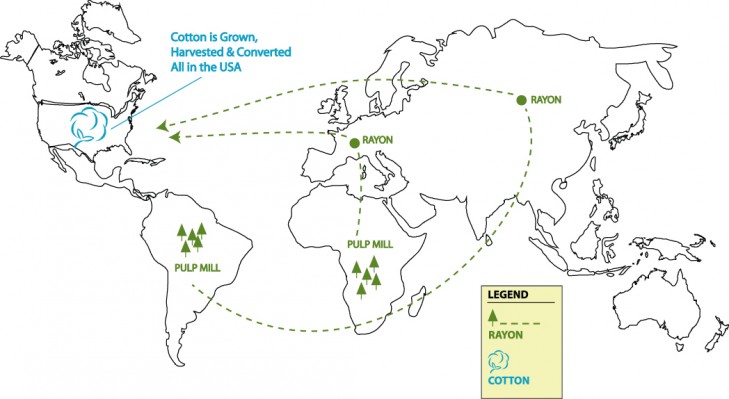First off, we hope you’ve taken the time to check out the Sustainability page we recently created for our new site. Not only is this page a wealth of cotton sustainability information, but we also made sure to cover all of you visual learners out there with a few infographics that provide quick snapshots of some fascinating cotton facts. We’re willing to bet that there are plenty of consumers that will be surprised by some of the stats provided on this page—specifically the supply chain map.
An explanation of cotton’s path from the field to the consumer is fairly simple. First, cotton is grown and harvested in the Southeast United States. Of course, it’s also ginned and purified in the U.S. before being shipped to the nonwovens producer, then to the converter, and finally to retail shelves. Ultimately, this makes for a perfectly sustainable supply chain, one that provides a natural solution for an ever-growing group of eco-conscious consumers. This is truly remarkable given cotton’s myriad applications.
While we’re certainly cotton-biased, no matter the product it’s hard to argue that this kind of supply chain shouldn’t be the expectation, the standard. While cotton has some built-in advantages that make for such an ideal—yet logical—pathway, creating a cost-effective and eco-conscious farming and manufacturing platform should always be the goal. That’s what makes rayon’s supply chain so bewildering, and maddening.
Since rayon is produced from trees grown and pulped in Africa or South America, then shipped to Asia or Europe for fiber conversion, and then shipped to North America for final conversion before hitting retail shelves, it’s a wildly convoluted and inefficient supply chain. And, of course, it’s not remotely sustainable.
Consumers have become more conscious than ever about the products they buy. They place a premium on being in the know about where products come from, and how those products find their way to them. When it comes to fibers, this should serve as fairly significant evidence that if you’re looking to make the most sustainable choice, cotton’s simple supply chain makes your decision an easy one.
